Working at an outdoor science school in the San Bernardino Mountains has some perks. Aside from hiking in the forest, teaching students about nature, coexisting in a healthy world, breathing fresh mountain air, and going on weekend adventures, we also get to learn about the forest from true professionals.
For once, WE got to be the students rather than the teachers, and it was pretty great.
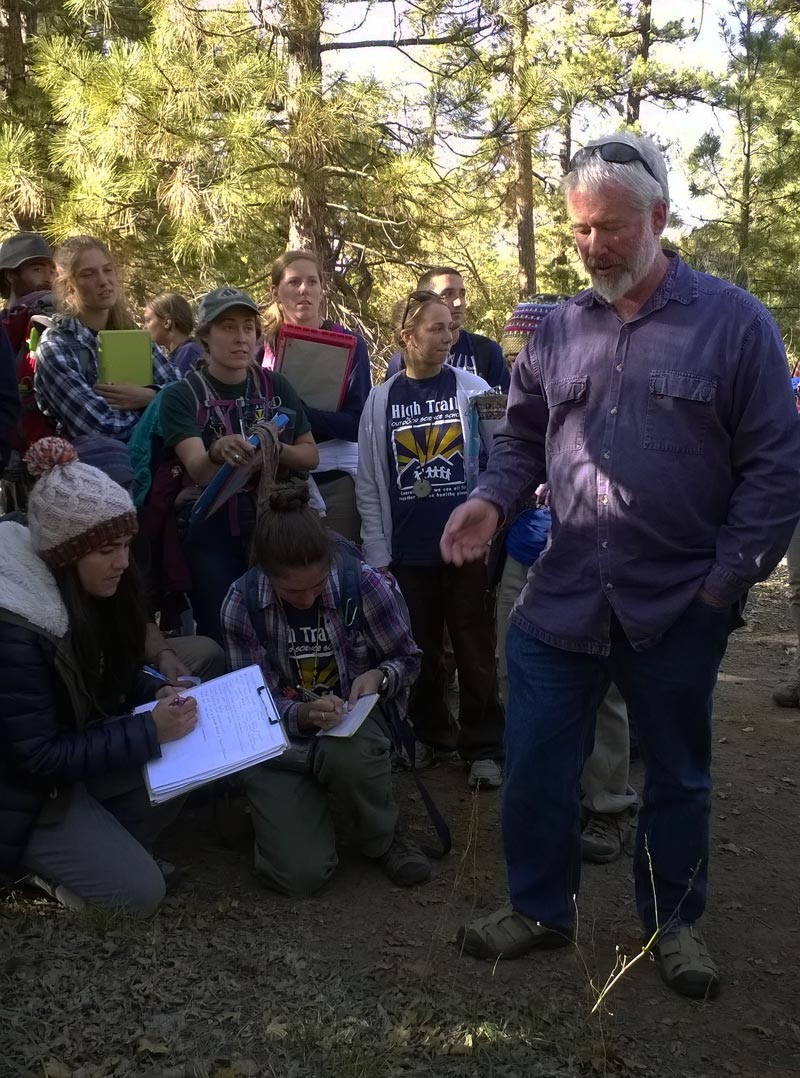
Scott Eliason, holding court with his eager students.
Scott Eliason is the District Botanist for the San Bernardino National Forest. We were fortunate to have him join us for a hike along the Jenks Lake Trail which passes near both our Edwards and Nawakwa sites, and heads to Frog Creek, a common destination we take students to each week. (We also wanted to check out Frog Creek since it’s a riparian zone that hosts many different plants.)
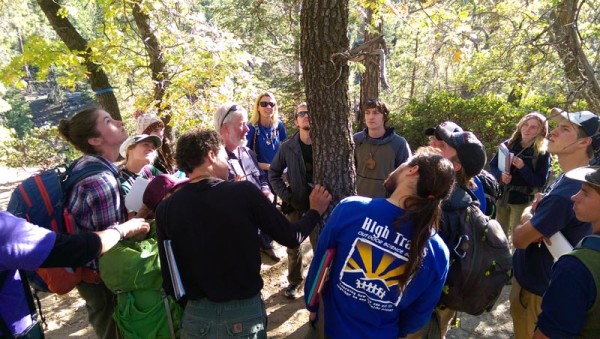 As Scott explained to us, California has an incredibly large specied set of diverse plants – there are about 4,500 to 5,000 species in the state. (This number only includes vascular plants.) However, what was even more interesting to us is that you can find 1/3 of California’s vascular plants in the tiny San Bernardino Mountains. Wow!
As Scott explained to us, California has an incredibly large specied set of diverse plants – there are about 4,500 to 5,000 species in the state. (This number only includes vascular plants.) However, what was even more interesting to us is that you can find 1/3 of California’s vascular plants in the tiny San Bernardino Mountains. Wow!
Vascular plants use tubes (xylum and phloem) to carry nutrients back and forth. Trees, flowers. Non-Vascular plants don’t have these tubes, and must absorb nutrients directly into the plant itself. Mosses, ferns.
This sounded like an astounding amount to possibly witness on our hike but we soon learned that in the fall season, we typically only see about 10-20% of these plants in our mountain home. (The spring is when you’ll encounter the most.)
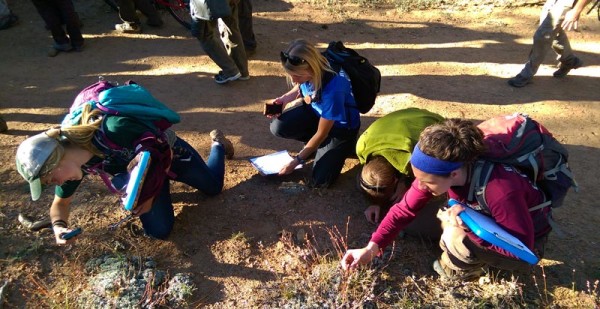
Getting dirty to find the plants.
One reason the San Bernardino Mountains possesses so much diversity is because of its Mediterranean climate. Another factor is that the mountains are at an intersection of varying influences which is why one can find plants from the coast, desert, Sierra Nevada Mountains, Baja Peninsula and even from the desert of the Southwest. Zooming in even more, High Trails is at an elevation of about 7,000 feet, so we work and live in an area that is primarily a mixed conifer forest.
 Hmmm mixed conifers, you say? Well that brought up a good question. Even as instructors that hike through the forest almost every day, we sometimes struggle telling the difference between Jeffrey and Ponderosa Pines.
Hmmm mixed conifers, you say? Well that brought up a good question. Even as instructors that hike through the forest almost every day, we sometimes struggle telling the difference between Jeffrey and Ponderosa Pines.
Scott assured us that we are not the only ones that share this uncertainty. According to Scott, these commonly seen pines are actually quite promiscuous, and have found a way to cross pollinate and have become hybrids over time. However, there are a few identifying factors that can assist one in recognizing the difference.
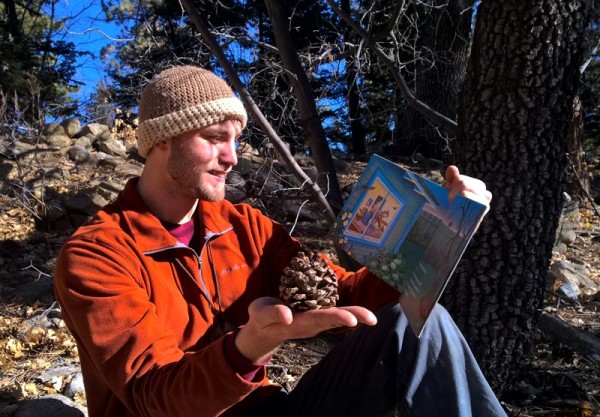
Gentle Jeffrey. Er…Mark.
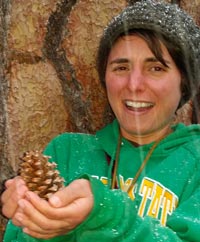
Ponderosa’s Prickly Jaimie
Think “Prickly Ponderosa” and “Gentle Jeffrey” to help you remember the difference between these two trees. The spurs on a Ponderosa pine cone flare outward and can prick the hand of an unknowing admirer. On the other hand, the spurs on a Jeffrey pine cone are gentle and flare inward.
In addition, Ponderosa pine cones are often smaller than those of a Jeffrey. Finally, check out the bark – the lines in between the protruding bark on a Ponderosa are typically dark brown, which is unlike the yellow/orange hue of Jeffrey bark.
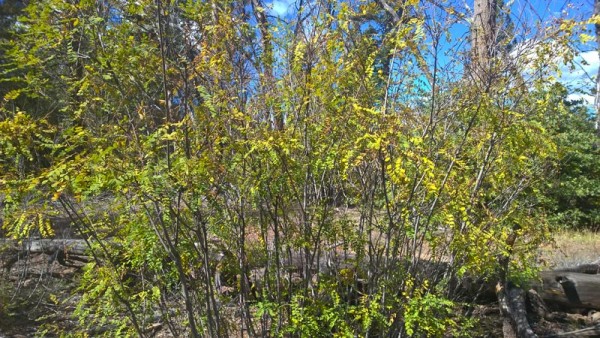
This is NOT Mesquite. It IS California False Indigo.
The next noteworthy plant on our hike was mesquite. Well, what we thought to be mesquite, at least. Turns out we had misidentified the California false indigo to be mesquite all along. This came as a shocker for some of us but hey, that’s why we were Scott’s students.
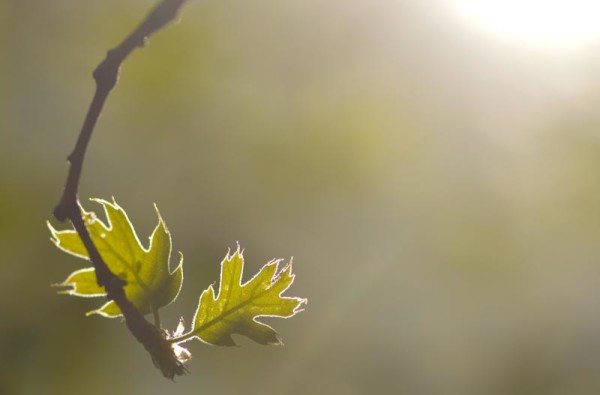
This would be a Black Oak
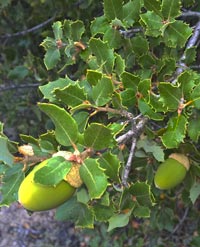
And this would be a Live Oak
Another interesting fun fact about plants we regularly see is the Black Oak versus the Live Oak. Right now, Black Oaks have beautiful yellow leaves that are falling to the ground as winter approaches. On the contrary, Live Oaks are evergreen (and are also known as Evergreen Oaks), and do not lose their foliage in the colder months. Plants can be unassuming!
As we continued to hike down to Frog Creek, Scott pointed out some beautiful wildflowers and blooming ground coverage that we were pleasantly surprised to see at this point in the season.
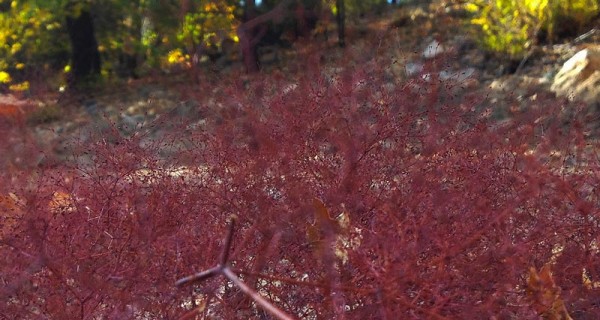
Some call if fireweed, but it’s really Parishes Wild Buckwheat.
A few of these include Parishes Wild Buckwheat, Red Penstemon, White Yarrow, Gilly Flower and more.
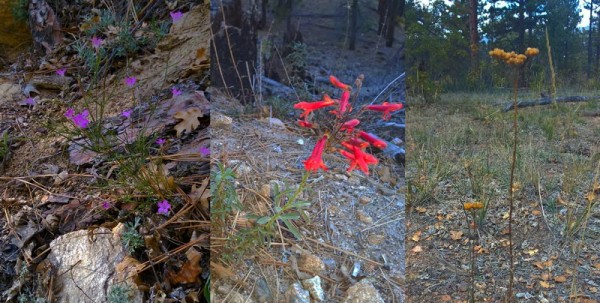
The Gily Flower, Penstemon, and Yarrow
Scott explained that many of these plants were still blooming because this past July was considered a monsoon month. Not to mention, gravity carries groundwater to drain into Frog Creek and therefore, we saw a vast array of plants still in bloom in this riparian zone.
Once we arrived to Frog Creek, the effects of the wildfire that blazed through parts of the forest this past June, just missing us thanks to the barrier of Jenks Lake Road and the hard work of fire fighters, was quite evident.
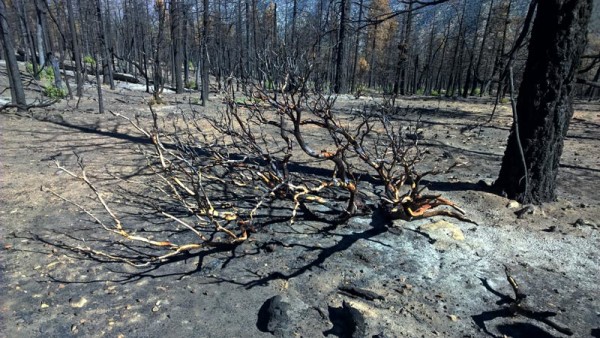
Lake Fire Damage
Frog Creek was full of natural debris from landslides and erosion due to the wildfire, which is known as ecological pollution. In addition, the wildfire likely caused the water temperature to rise and induced the growth of algae and other micro-organisms – a phenomenon known as thermal pollution.
Both of these types of water pollution are taught to students in our Water Wonders class so these are relevant “teachable moments” for us and worth noticing alongside plants.
 We also discussed how the wildfire will change the botany of the burnt area because the competition of resources has shifted, along with the soil content. Plants that are part of the understory will thrive and a new canopy layer will sprout and, over time, grow into the high tree canopy we are used to seeing around High Trails.
We also discussed how the wildfire will change the botany of the burnt area because the competition of resources has shifted, along with the soil content. Plants that are part of the understory will thrive and a new canopy layer will sprout and, over time, grow into the high tree canopy we are used to seeing around High Trails.
It would be a gross understatement to say that our hike with Scott the USFS Botanist was informative. We identified and discussed so many kinds of plants, many that we had not even noticed before.
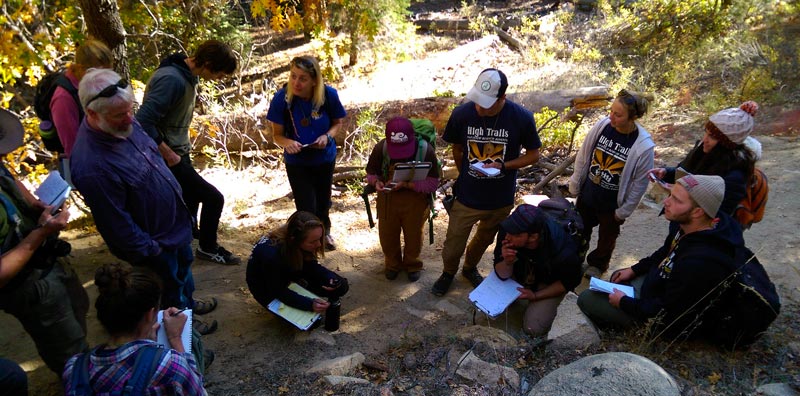 I believe the big take away from our time with Scott was how fortunate we are to live somewhere so ecologically diverse and beautiful – the San Bernardino Mountains are an incredible place.
I believe the big take away from our time with Scott was how fortunate we are to live somewhere so ecologically diverse and beautiful – the San Bernardino Mountains are an incredible place.
It was a real pleasure to see the forest through the eyes of a student and learn so much from Scott. Now, our job is to pass this knowledge on to our students who will hopefully leave High Trails more aware of the natural world around them and thinking how we can all coexist on a healthy planet.
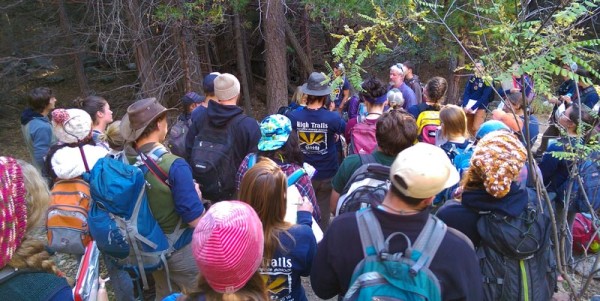
One great teacher. Many eager students. Thank you Scott!
At High Trails Outdoor Science School, we literally force our instructors to write about elementary outdoor education, teaching outside, learning outside, our dirty classroom (the forest…gosh), environmental science, outdoor science, and all other tree hugging student and kid loving things that keep us engaged, passionate, driven, loving our job, digging our life, and spreading the word to anyone whose attention we can hold for long enough to actually make it through reading this entire sentence. Whew…. www.dirtyclassroom.com

Comments are closed.